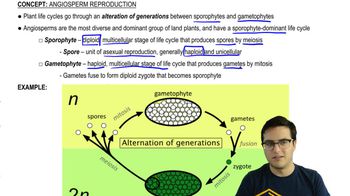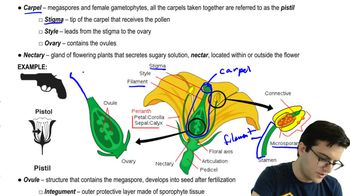Where in an angiosperm would you find a megasporangium?
a. In the style of a flower
b. Enclosed in the stigma of a flower
c. Within an ovule contained within an ovary of a flower
d. Packed into pollen sacs within the anthers found on a stamen
 Verified step by step guidance
Verified step by step guidance Verified video answer for a similar problem:
Verified video answer for a similar problem:

